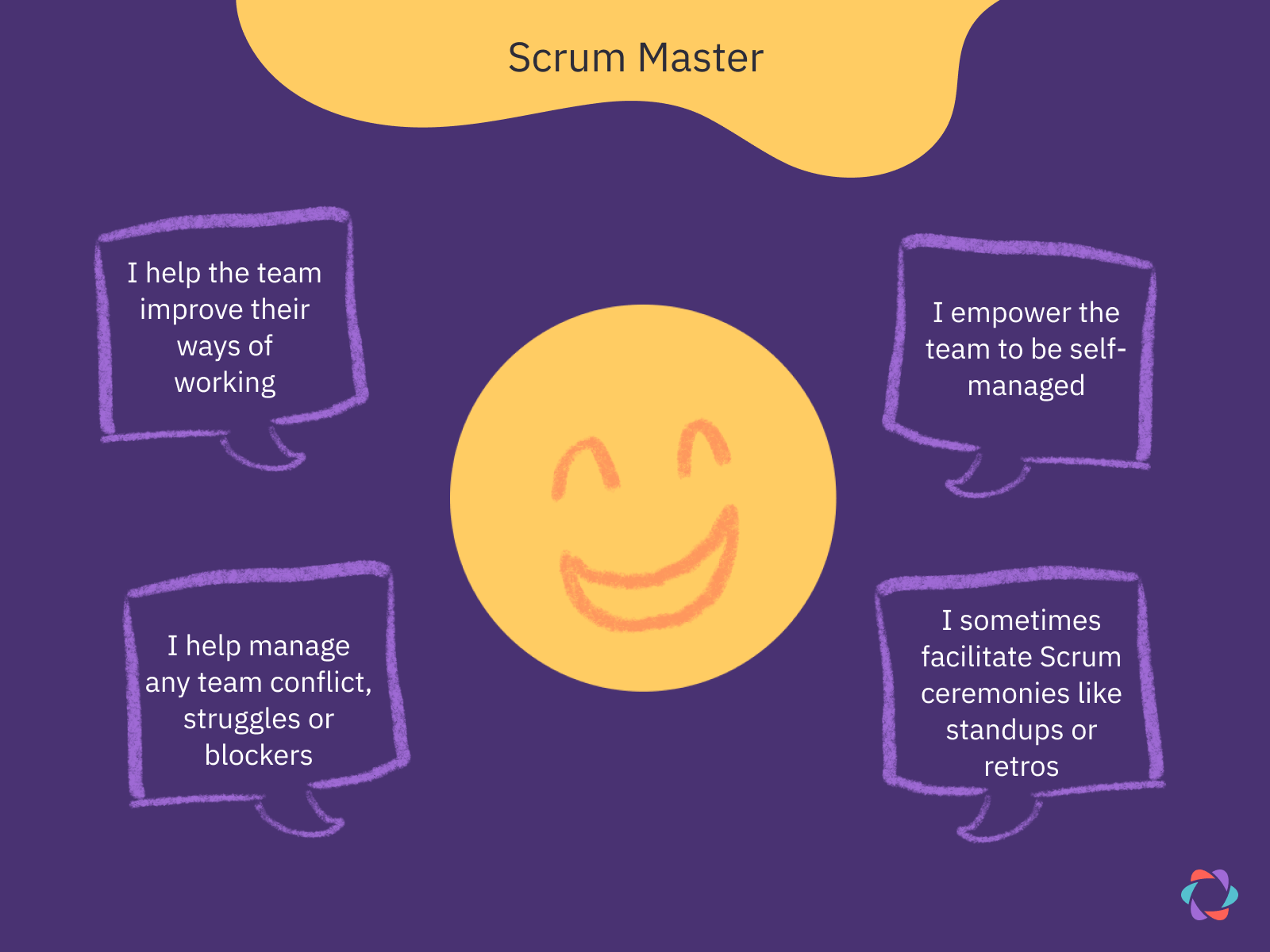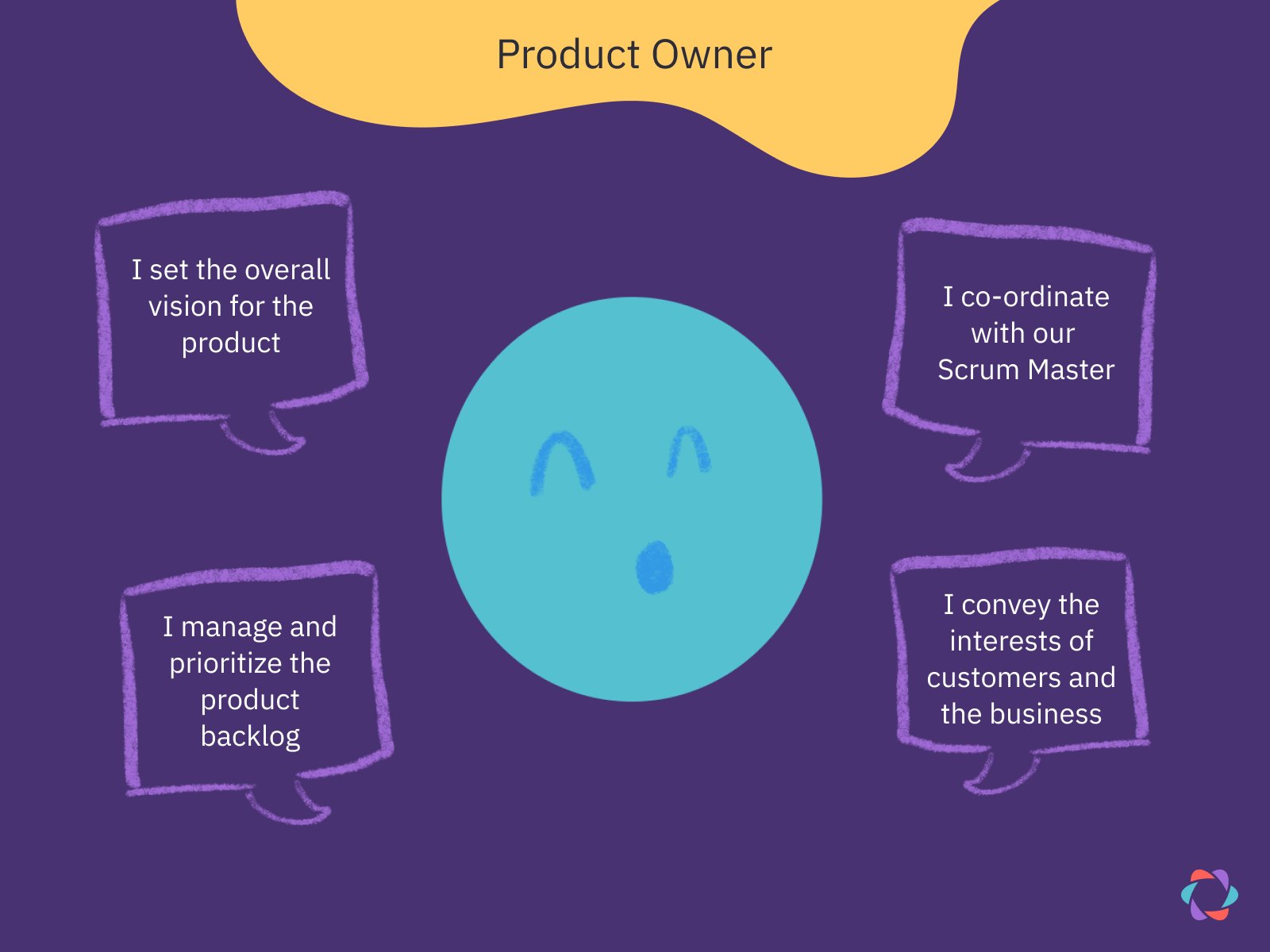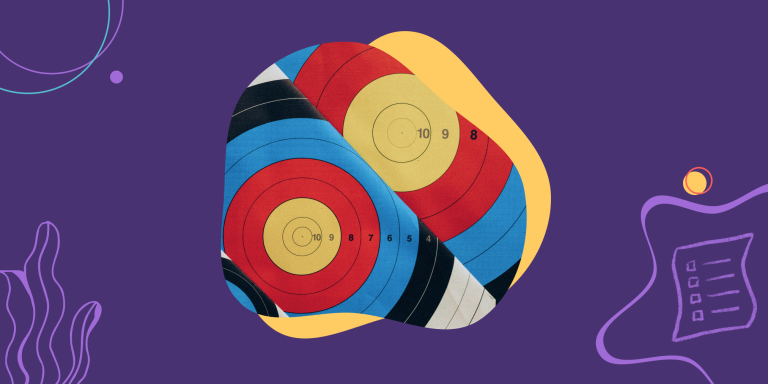Scrum Master vs Product Owner: Differences and Similarities

What’s the difference between a Scrum Master vs Product Owner?
Both are accountable for helping the Scrum team achieve meaningful progress towards its goals. But there are some key differences too.
In this blog, we’ll dig into the key differences and similarities between the Scrum Master role vs Product Owner role, so you can set your team up for success and avoid any confusion along the way.
First things first, let’s cover the accountabilities of Scrum Masters and Product Owners.
What is a Scrum Master?
The Scrum Guide offers the primary source of information about both the Scrum Master and Product Owner positions. The Scrum Guide says that:
“The Scrum Master is accountable for establishing Scrum as defined in the Scrum Guide. They do this by helping everyone understand Scrum theory and practice, both within the Scrum Team and the organization. The Scrum Master is accountable for the Scrum Team’s effectiveness”
Scrum Masters are team coaches that support the Product Owner and Developers in mastering Scrum and implementing it effectively. Through a Scrum Master’s efforts, a Scrum team should reach a stage where they become self-managing. The Scrum Master’s goal is to coach the team towards self-sufficiency.
The Scrum Master’s focus is less on the “what” of work, and more on the “how”.

A typical day in the life of a Scrum Master might involve:
- Facilitating Scrum events (Daily Scrum/Daily Standup meetings, Sprint Planning, Sprint Review and the Sprint Retrospective), coaching teams on how to run them, building a positive atmosphere, and ensuring the Sprint is productive
- Removing impediments to the team’s work towards the Sprint Goal, often as part of the Daily Scrum
- ♂️ Coaching and advising the team on self-management and cross-functional working
- ️ Supporting the broader organization in implementing or scaling Scrum with other teams
- ✅ Helping the team find healthy processes for managing their product backlog and work
The Scrum Master plays a supporting role for the team and is not a project manager. That means the Scrum Master is not accountable for deciding what work gets done or who does what.
Instead, the SM serves both Developers and the Product Owner alike in making the Scrum process work for the team. The Scrum Master will also help team members understand where their Scrum accountabilities begin and end according to Scrum methodology.
Further Reading
What is a Product Owner?
Product Owners are accountable for setting the vision for the Scrum team’s Developers.
The Product Owner’s role is concerned with setting a vision for the Developers to work towards. One accountability is managing and prioritizing the Product Backlog, which is one of the key Scrum artifacts.
The Scrum Guide says that:
“The Product Owner is accountable for maximizing the value of the product resulting from the work of the Scrum Team. How this is done may vary widely across organizations, Scrum Teams, and individuals. […] The Product Owner is one person, not a committee. The Product Owner may represent the needs of many stakeholders in the Product Backlog.”
Product Owners communicate with business-side stakeholders and customers to ensure the right product features are being prioritised.
They must then communicate the Product Goal clearly to the development team so Developers understand the purpose and thinking behind their work.

The Product Owner’s accountabilities include:
- Developing the “Product Goal” and communicating it to the team
- Ordering product backlog items to ensure they are sufficiently detailed and prioritized to be in line with the Product Goal.
- Ensuring the Product Backlog is transparent, visible and understood.
Product Owners are not managers that assign tasks. Developers assign their own tasks and decide on the best way to complete items on the backlog. This makes the Product Owner more like a strategist, pointing the team in a specific direction towards the Product Goal.
Further Reading
Scrum Master vs Product Owner
Let’s look at what skills both Scrum Masters and Product Owners need to be successful in their roles. The Scrum Master and Product Owner share many of the same soft skills, but they are deployed in different ways that complement each other and offer the team a different kind of support.
Essential Scrum Master Skills
- Scrum Knowledge: The Scrum Master coaches the team on how to implement Scrum and make it a success, so extensive Scrum knowledge and experience is required.
- Communication Skills: Much of a Scrum Master’s day-to-day work involves speaking with people, coaching them, educating, and managing team struggles. This requires empathetic and patient communication.
- Servant Leadership: The Scrum Master’s leadership skills are geared towards giving time to others and making themselves available for the team’s benefit. A servant leader focuses more on mindset, team wellbeing, and empowering others, over traditional top-down leadership.
- Transformation Skills: Scrum Masters need to have the skills to help teams shift away from what’s easy and comfortable. They also need to be capable of applying transformation skills to the broader organization.
- Coaching Skills: Scrum Masters are like teachers that need to be understanding, patient, generous and empathetic. They have the team’s best interests at heart and help them to succeed.
- Empathy: The Scrum Master may face resistance to change and also see the team failing or doing things wrong from time to time. Scrum Masters must remain patient and empathetic during this process, realising that change doesn’t happen overnight and that adapting to new ways of working is hard.
Essential Product Owner Skills
- Scrum Knowledge: The Product Owner also needs to understand Scrum to ensure they understand their role in the Scrum team, but it’s not the most important competency.
- Communication Skills: Product Owners need to be able to resolve conflict, wins trust, and convince stakeholders with their communication skills. Product Owners need to be able to communicate the product vision clearly to the Scrum team’s Developers.
- Strategic Leadership: The Product Owner sets a strategic vision of what the team needs to achieve. They lead by determining the direction of the team rather than leading the people-first side of work.
- Prioritization Skills: Product Owners are responsible for ordering and prioritizing the product backlog. They must be able to choose between multiple good options (or competing demands) to clearly prioritize what gets built next using a clear prioritization method.
- Conflict Resolution: Product Owners reconcile demands from users, the business, and developers into a product vision that makes commercial sense. When there are so many opinions in the mix, it’s hard to keep everyone happy all the time. POs must find a path forward.
- Empathy: Product Owners need to be able to understand the perspective of users, developers, and the business, then pull that together into a compelling product roadmap. Without an empathetic approach to stakeholder input, the PO will struggle to build and maintain a compelling product vision.
Can the Scrum Master and Product Owner be the same person?
The Scrum Guide doesn’t specifically rule out the possibility of the Scrum Master and Product Owner being the same person. But there’s a fundamental conflict of interest between the roles that makes it difficult for one person to adequately fulfil both roles at the same time.
One of these conflicts is that the Scrum Master is meant to support the Product Owner. If the Scrum Master and Product Owner are the same person, that support can’t be given.
Certified Scrum Trainer Bryan Stallings says:
“The ScrumMaster is one individual who focuses on supporting the team and protecting the team. Trying to help them achieve a sustainable pace, help them as they try to deliver high quality, and really be a servant to the team. On the other hand, you’ve got the Product Owner. The Product Owner is focused on prioritizing, getting the backlog ready, and they’re asking for “more, more, more” when it comes to business value. So, those two can be in conflict”
But more than that it’s about focus. We all have a limited amount of it. Trying to coach while setting the vision. Trying to collect user data while implementing Scrum. And trying to manage stakeholder conflict while ensuring a productive and positive environment in meetings. It’s hard!
Suppose you’re in a position where you’ve transitioned from Scrum Master into a Product Owner role:
- You still don’t have the outside perspective on the team that a Scrum Master would because you’re deep in the weeds.
- You don’t have more focus than other people, even if you have the expertise.
It’s all too easy to fall into project manager style activities when holding both accountabilities. So beware!
Process vs Product focus
The Scrum Master and Product Owner roles are easy to mix up. Especially if you’ve come from a traditional waterfall management environment and you’re launching your Agile implementation.
The most fundamental difference between a Scrum Master vs Product Owner is their focus.
The Scrum Master’s focus is on the process of work. Teaching, optimizing, and occasionally acting as facilitator. The Product Owner’s focus is on (you guessed it) the product and ensuring the development team deliver products or features that add value.








